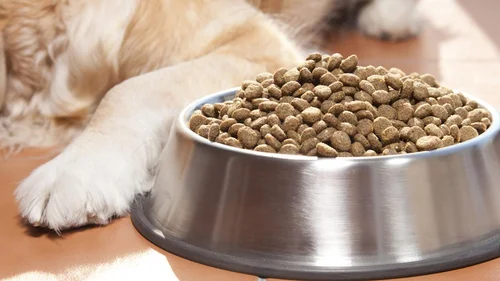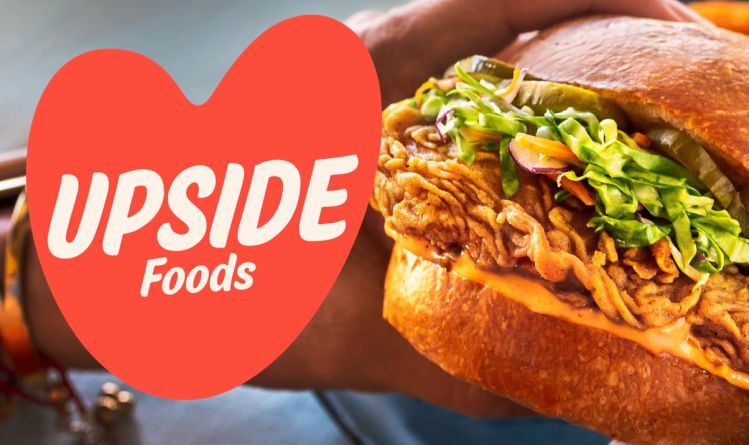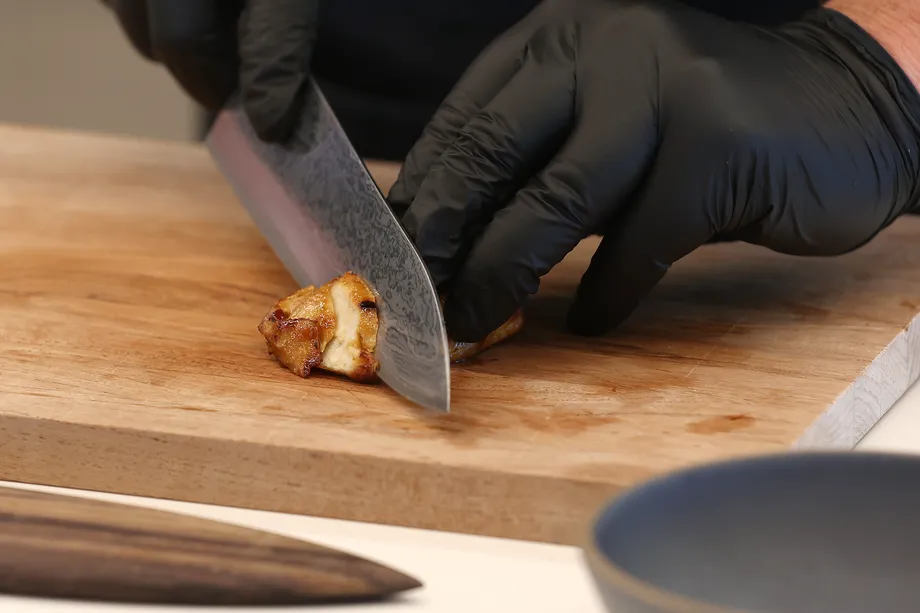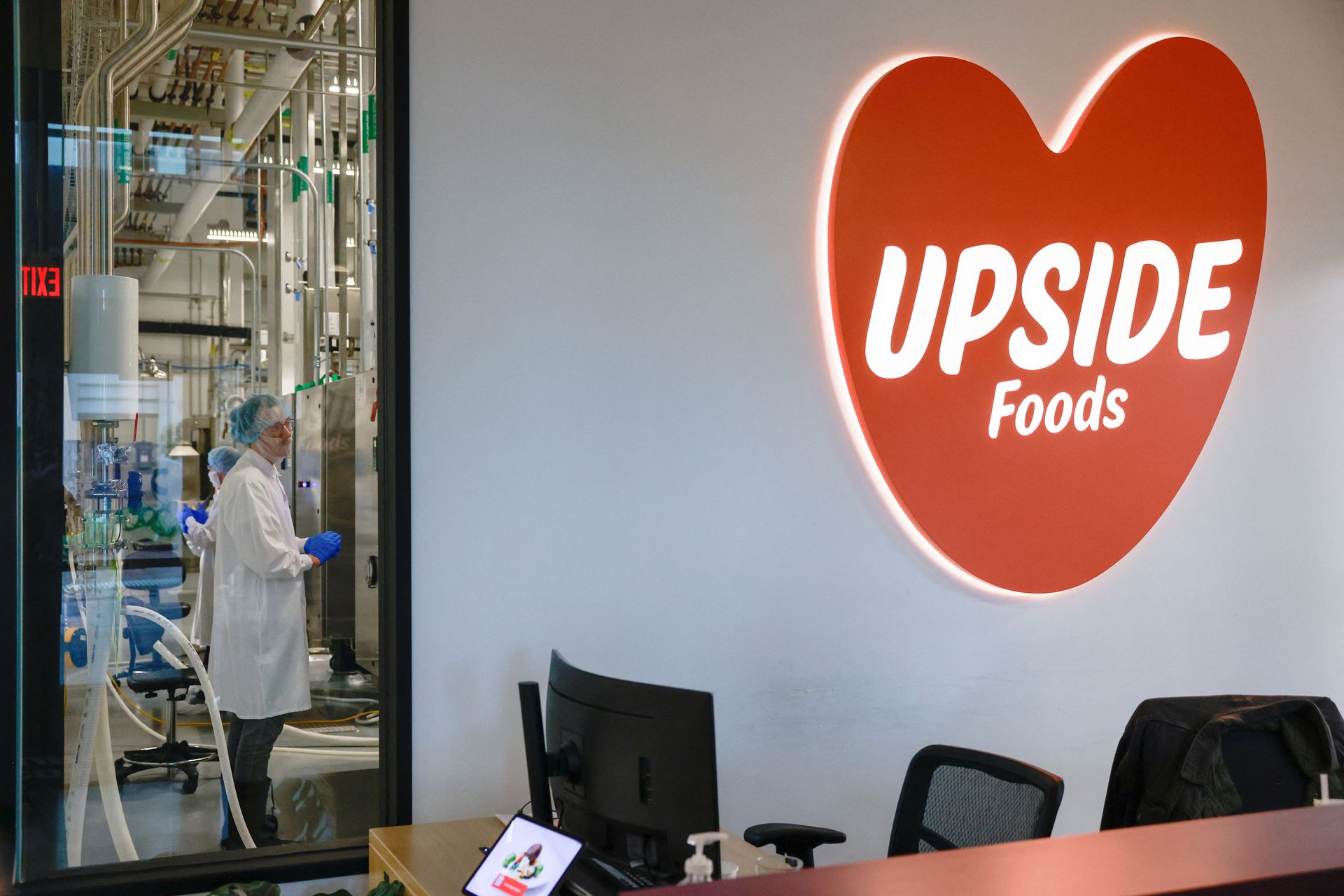Last month, cultivated meat — chicken, to be exact — debuted at a restaurant in the United States for the first time. But the human beings sitting down at eateries aren’t the only customers being targeted by this nascent industry. There’s another group of meat-eaters that might just be key to launching cultured meat into the mainstream: pets.
Creating a cultivated meat substitute for pet food would be more climate-friendly, more ethical and possibly even healthier for our furry companions. Pets can develop allergies to the proteins in their food — often chicken, beef and lamb — but cultivated meat has an advantage: it doesn’t have to source from traditionally farmed animals.

It’s an advantage in a number of ways, says Dr. Shannon Falconer, the CEO and founder of Biocraft Nutrition, a leading cultivated meat pet food company. Pet food is “a major crutch of the meat industry,” says Falconer, which is why the company is betting on cultivated pet food to really “move the needle.”
Pet Peeves with Pet Food
Many pet lovers may not realize the climate damage their companions’ kibble can cause, but pet food is in fact unsustainable. American cats and dogs eat one-third of all meat consumed in the U.S. and are responsible for 64 tonnes of carbon dioxide-equivalent emissions.
Meat-based pet food is derived from animal agriculture — specifically, the leftover parts of animals: organs, bones, tallow and the like. Meat lobbies prefer the word “recycling” and claim that pet food is actually a sustainable option, helping use up leftovers from processing plants. Says Falconer, “These ‘scraps’? [They sustain] animal agriculture as we know it.”
“Rendering” (aka using leftover parts of animals killed for human consumption to make food for pets) is best thought of as a co-product. While it sounds more sustainable in theory, it is truly an independent industry with its own environmentally detrimental processing plants, and tens of billions of dollars of revenue every year. Even the meat industry lobby refers to the two industries as “closely-knit.” Reducing consumption of meat-based pet food, then, would reduce the power of the meat industry and potentially mitigate their massive impact on the environment. Environmental researchers point to alternative proteins like Biocraft nutrition as a potential solution.

Pet food is also a moral conundrum for many vegans and vegetarians, who may ask themselves: Is it ethical to buy products from the animal agriculture industry to help the life of one companion animal? Animal lovers are torn on the question, with some questioning the right to own animals at all, and others saying that pets’ lives should always be prioritized.
While research shows that dogs can thrive on a well-planned meat-free diet (and may even live longer than meat-eating dogs), most dog owners are reluctant to only give their dogs plant-based options, for fear of nutrient deprivation. And, unlike dogs, most vets recommend that vegans and vegetarians feed their cats at least some portion of meat.
Cultivated meat would represent the perfect solution to this dilemma, especially for cat-owners: all of the nutrition, none of the animal suffering. Cultivated pet food would also avoid other nasty disadvantages of animal agriculture: the massive antibiotics use and fecal contamination in rendered pet food chief among them.
According to Falconer, cultivated pet food would solve nearly all of these problems. The challenge, then, is getting it to market.
A Pathway Riddled with Obstacles and Opportunities
In many ways, the obstacles facing cultivated meat pet food are nearly mirror opposites to the ones facing cultured meat for human consumption.
Upside Foods and Good Meat have already passed regulatory approval in the United States, and more cultivated meat companies are filing applications, hoping to follow in their footsteps. But surprisingly, cultivated meat pet food will be more difficult to pass regulation than cultivated meat for humans. “Pets eat the same food day in and day out,” says Falconer, explaining that the homogeneity requires pet food companies to pass more stringent checkpoints than human food.
In the United States, Biocraft will need to curate their ingredient list to closely match the recommended set of ingredients curated by the Association of American Feed Control Officials (AAFCO). Falconer says they are already in talks with the FDA, and have identified a pathway to regulation. In the EU however, the pathway isn’t quite as clear, which is common for the 27-country conglomerate.

Any cultivated meat product in its early days will fetch quite the price tag too — there’s a reason the first U.S. restaurant to serve cultured chicken has a Michelin star. With current processes, cultivated meat would cost around $30 per pound, nearly four times the cost of slaughter-based beef. Not exactly a bargain.
While expensive, the price tag is intuitive; the companies need to earn back their R&D costs while scaling up their supply to create something affordable. It’s unclear how long the cultivated meat industry will need to become price-competitive. It is estimated to reach price parity around 2030 and, if all aspects of production are optimized (which is not guaranteed), cultivated meat may eventually become four times cheaper than beef. The challenge will be whether cultivated meat companies can build a large-enough customer base willing to buy the premium products to sustain them as they scale up and optimize manufacturing.
Here’s where cultivated pet food may have an advantage. While a price tag is far from determined, it is likely to become cheaper, faster. Companies like Biocraft don’t have to worry about creating a mouth-watering texture that resembles Wagyu steak or chicken breast (pet food isn’t exactly notorious for being a feast for the eyes, after all).
Instead, Falconer is working on creating a meat “slurry” that can be packaged into cans — a process that is far cheaper, since the biomass (which is normally unusable for cultivated meat for humans) can be used in the product. “Price is less of an issue for us,” says Falconer.
:max_bytes(150000):strip_icc()/GettyImages-1137504605-4ea3ceec185f4d1e9dc39fb71f8ae04c.jpg)
Even if the price is high, people may shell out big bucks for the health of their furry friends. According to one poll, 52 percent of Americans spend more on their pets than themselves, with quality food being the top reason why. If cultivated meat can tap into this mindset among consumers concerned about the health of pets eating the meat that comes factory farms — it could fly off the shelves.
** Click here to read the full-text **











